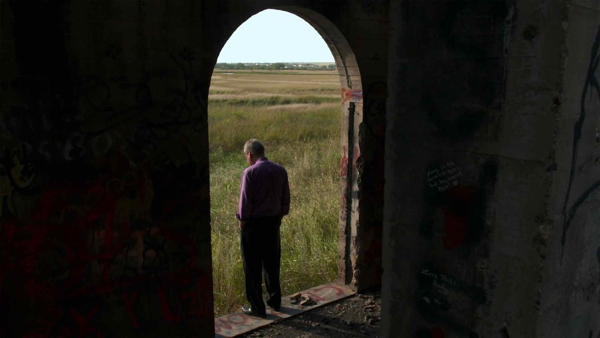Movie review by Greg Carlson
Filmmaker Jesse Moss constructs one of the best documentaries of recent memory in “The Overnighters,” a complex and thoroughly gripping look at ourselves when faced with questions of charity, forgiveness, trust, and love. Set during the recent explosive population boom in Williston, North Dakota that accompanied the introduction of fracking, the film takes a hard look at community from the inside, and what Moss sees – like the best filmmaking – makes us feel a little less comfortable. Moss distills the waves of arriving migrants into astute observations that have been repeatedly and accurately compared to “The Grapes of Wrath,” emerging with a chronicle both poignant and personal.
Moss, who operated his own camera and remarkably served as the only location crewmember during principal photography, gains intimate access to his subjects through a relationship with Pastor Jay Reinke, a fascinating character whose willingness to live out his interpretation and understanding of Christian directives puts him in conflict with his parishioners, his neighbors, the city council, the local media, some of the very men he desires to help, and even his own family. Reinke runs the Overnighters program, which opens the doors of Concordia Lutheran Church to provide shelter to workers who have no other place to stay. Reinke’s radical hospitality disrupts the congregation just as much as the influx of men seeking employment in the oil fields rattles the previously quiet municipality.
Along with Reinke, Moss introduces the audience to several men, including Keegan Edwards, a young father from Wisconsin desperate to make a better life for himself, and Keith Graves, a registered sex offender whose participation in the Overnighters program poses a huge threat to its very existence. When Reinke invites Graves to move into his home – in part to counter charges in the Williston Herald that criminals are being housed in the program – Moss locates a key flash point for the drama. Is Reinke merely practicing what he preaches? Placing his children at risk? Avoiding responsibility? Taking responsibility? Demonstrating faith in the possibility of redemption? Exercising hubris and foolishness?
Moss must have had an abundance of potential story options when he amassed the footage that would become “The Overnighters,” but he and editor Jeff Gilbert also make decisive choices in shaping the narrative. The resulting urgency and immediacy fuel the movie’s churning engine and flood the viewer with emotion. Reinke, at the center of it all, is unforgettable – so much so that Moss has indicated he included some material to remind the viewer that the unfolding story was unscripted. In one gripping sequence, a youthful newspaper reporter dogs Reinke in the street, repeating his questions while Reinke, acting distracted and trying to hide his agitation, ignores him.
Moss sticks to Reinke like glue, and by the film’s final sections, the closeness yields a series of absolutely stunning onscreen revelations that simultaneously upend and validate the complexities of the content that forms the first two thirds of the movie. In several scenes, Moss’ lens bears witness to jaw-dropping intimacies that at first don’t even seem real. Once the shock wears off, the viewer is invited to reevaluate previously covered territory. This experience is otherworldly, since in at least one raw instance, Moss had no idea that he would be capturing such a private moment (in multiple interviews, Moss insists he would have turned the camera off that day had he been asked). The filmmaker’s respect for his subjects defines “The Overnighters,” an indelible snapshot of a particular place at a particular time.
